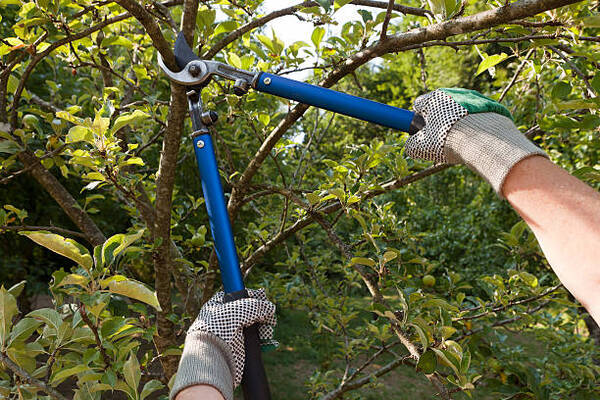- 1-905-452-8193
- Contact Us
- Member Login
- Get Listed Today
- 220,911 members

Pruning is a horticultural procedure that involves the selective removal of certain parts of a plant, such as branches, buds, or roots. There are many reasons why pruning is done, including to improve the plant's health, shape, or appearance. Pruning can also be done to remove dead or damaged parts of the plant. Proper pruning techniques are important to avoid harming the plant.
According to tree removal Sydney owner Michael Dunia, there are several things you need to keep in mind If you are considering pruning a tree in your yard. First, you should identify the type of tree you are dealing with and its specific needs. Different types of trees may require different pruning techniques depending on their growth habit or age. You will also want to consider whether the tree is growing healthy and well, as this can help determine if pruning is necessary at all.
If you are unfamiliar with how to properly prune your trees, here are some useful tips to help you get started.
1. Start by choosing the right tools for the job. You will need pruning shears or loppers for branches up to 1 inch in diameter, and saws or axes for larger branches. Be sure to choose quality tools that are sharp and well-maintained so that they can do their job effectively.
2. When pruning, always make clean cuts close to the branch collar at an angle between 45 and 60 degrees relative to the stem or limb being cut off. This will help prevent damage to the tree and promote healing.
3. Do not top your trees! This practice can seriously damage or even kill a tree. Topping also encourages the growth of weak, unstable branches that are more susceptible to breakage in high winds.
4. If you must remove a large branch, do it in stages by first cutting about 1/3 of the way through the branch from the underside. Then make a second cut from the top, completing the removal. This will help minimize damage to the tree.
5. Never leave stubs when pruning branches. Cut branches back to their point of origin or to another lateral branch that is at least one-third the diameter of the main stem.
6. When pruning suckers or sprouts from the base of a tree, always cut them at the stem or trunk so that you are removing the entire sprout. This will help prevent new growth in unwanted areas and keep your tree looking healthy and neat.
7. Prune any branches that cross each other or rub against one another. While these branches may not cause immediate damage, allowing them to remain on your tree can lead to trouble later on.
8. Be careful when working near power lines, as branches that touch these lines can cause serious damage if they come into contact with electrical currents. If you need to prune trees near power lines, consider hiring a professional arborist who is experienced in working safely around electricity.
9. When pruning trees, always be aware of their growth patterns and any potential hazards. For example, if you are pruning a tree that grows over your roof, consider removing only what you need to keep the tree healthy and safe. Removing too much can weaken the tree and leave it vulnerable during high winds or storms.
10. Prune branches that may become weak due to decay or disease first, since these branches will pose a greater risk for injury later on.
11. If you notice damaged or broken branches, remove them right away so they do not fall on anyone or anything below them and cause damage or injury.
12. Consider hiring an arborist who can help diagnose any problems with your trees and offer advice on the best way to address them. An arborist can also help you in selecting the proper tools and techniques for pruning your particular trees.
13. Always follow the manufacturer’s instructions when using any power equipment, such as pruning saws or chain saws.
14. Be sure to wear appropriate safety gear when pruning trees, including gloves, eye protection, and sturdy clothing that will protect your skin from cuts or scratches.
15. When in doubt, always err on the side of caution and consult a professional arborist before attempting to remove any large branches from your trees.
By following these tips, you can ensure that your trees stay healthy and look their best. With a little care and attention, you can enjoy the beauty of your trees for years to come. Contact your local arborist for more information about this.
